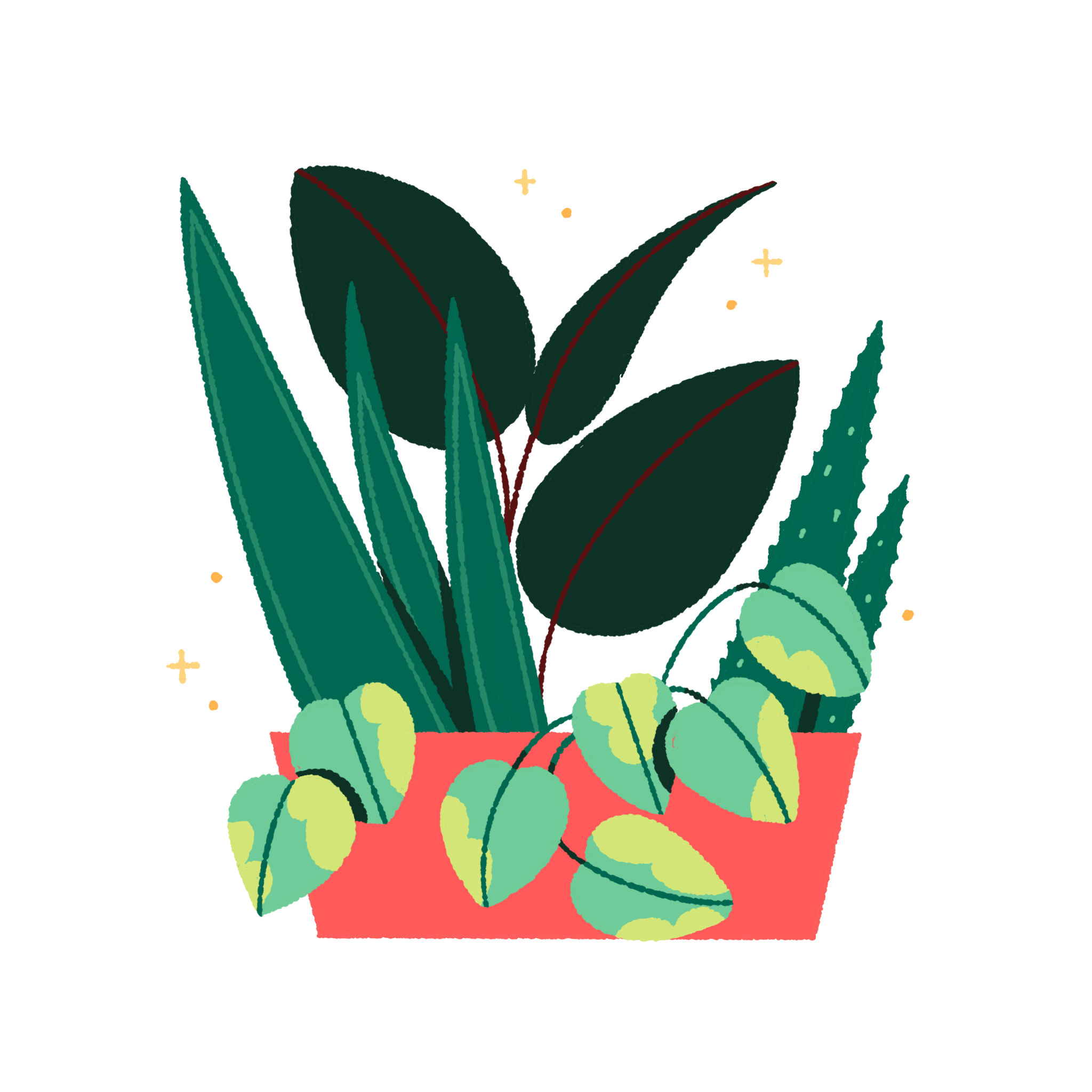How to Get a Lush Indoor Jungle on a Budget
On Instagram, there’s no shortage of plant-filled living spaces. A brief scroll produces variegated vines spilling from macramé planters and plump succulents nestled in speckled ceramics. And while it has found a home there, our love-affair with indoor jungles isn’t relegated to the app. From green-tinged pages ofbestselling books and magazines to highly viewed botanicalapartment tours on YouTube, houseplants are ubiquitous.
In fact, houseplant sales in the U.S. currently amount to 1.7 billion dollars a year, according to the National Gardening Association. But for many eager plant parents, cost can be a barrier. A medium-size fiddle-leaf fig can run 60 dollars, a small Chinese money plant 20. And it’s not uncommon for a single well-designed planter to have a triple-digit price tag.
While you could spend hundreds, if not thousands, decorating your space, there are budget-friendly alternatives. Keep reading to learn how to achieve the indoor jungle of your dreams without draining your wallet.
Getting Plants for Free
When you start shopping for houseplants, the prices can add up quickly. Thankfully, there are ways to get attractive indoor foliage at little to no cost, such as:
• Propagation: Propagation is the act of growing new plants from sources like cuttings or seeds. It allows you to purchase one or two small houseplants and multiply themendlessly. Several methods may be appropriate depending on the plant species, including leaf cuttings, stem cuttings, and water propagation. Some of the easiest options to propagate are the spider plant, pothos, and snake plant.
• Trades: If you’re looking for a simple and free way to take home something new, consider trading plants. For this option, you can exchange foliage that you’ve propagated in order to maintain your collection. Potential avenues for exchange include local plant swap events as well as green-thumbed coworkers and friends.
• Craigslist and Offer Up: There are situations in life that force people to part with their healthy houseplants. For example, someone may not be able to move across thecountry with their fiddle leaf fig. To your benefit, these people often get rid of their plants through services such as Craigslist and Offer Up.
Keeping Your Plants Alive
You’re bound to kill a few plants along the way. But consistently buying plants that aren’t a good match for your space or failing to care for them properly can drain your budget. These practices lead to an expensive cycle of replacement purchases.
Don’t fall into the trap of chasing trendy houseplants. Instead, do your research and find options that are compatible with the conditions in your house. For example, you may not want to buy a sensitive fern if your room reaches sweltering temperatures. Similarly, avoid purchasing a plant if you can’t care for it as part of your routine. If you only want to water your plants once a week, a thirsty umbrella palm is not the best choice.
Finding Low-Cost Planters
Planters can cost more than the greenery they’re designed to hold. But if you’re trying to fill your space with plants, you’re going to need somewhere to put them. While it’s tempting to shop the latest handcrafted ceramics, mid-century modern stands, and woven rattan baskets, you can find options that fit your style for a much cheaper price.
The houseware section of your local thrift store can be a great place to find containers. Planters are usually abundant but keep your eyes out for other attractive vessels that you can repurpose,too. While you’re there, look for interesting stools, racks, or chairs that could serve as pedestals to display your larger plants.
Are you a proud plant parent? Show us your affordable indoor garden by tagging #cozyclub on Instagram.

